
You’ve probably heard a lot about many species of wild animals that at some point or another were on the brink of extinction. Some species, like the dodo bird, have long since been gone while others slowly dwindle down in number. But there is still much hope as there are a lot of things we can and are doing to help.
With the aid of action plans and conservation schemes, species like the Indian Tiger, which had a population of 1,411 in 2006, now has a population of nearly 4000 and is growing. Here are a few endangered species that, like the elegant Bengal Tiger, need our help to survive:
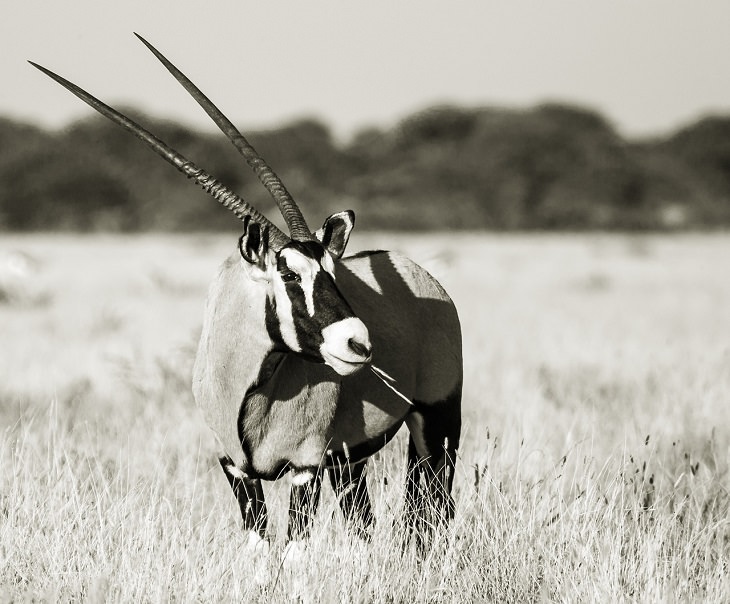
This beautiful Oryx (a member of the antelope family) goes by the scientific name Oryx Leucoryx. It is mostly found in Middle Eastern countries and is also known as the White Oryx. It was primarily hunted for its horn as well as for food and for sport.
As this species lives in dry and desert habitats, changes in the climate can also lead to dehydration and starvation. There are currently only 850 adults of this species left. But don’t worry. It is listed under Appendix I of CITES, which restricts any trade of this species (both nationally and internationally) and also requires domestic laws to legislate on the protection of the species (banning the sale and hunting of this species, protection of its habitat, etc.).
Most of the populations of this species are in protected areas, and numerous well-maintained breeding programs are in place in many countries like Qatar and Saudi Arabia. New breeding centers are also being planned for in Iraq and Kuwait. All conservation efforts are carried out under the Arabian Oryx Conservation Strategy that was initiated in 2007.
Thanks to these combined efforts, the population of the Arabian Oryx is now stable and efforts are being made to further increase their numbers.
To learn more about the Arabian Oryx, click here!
To learn more about the Arabian Oryx Regional Conservation Strategy and Action Plan, click here!

To combat the increasing illegal international trade of these protected species, an international agreement was drawn up between 183 independent nations. This agreement was called the Convention on International Trade in Endangered Species of fauna and flora (CITES for short).
CITES, which entered into force in 1975, was drafted to help countries keep track of the populations of different species across the globe, but its main purpose is to regulate the trade of endangered species. There are approximately 5800 species of wild animals and 30,000 species of plant listed under the three appendices of CITES.
Appendix III lists species which are protected in specific countries that require assistance from CITES to better control their existing trade in certain vulnerable species.
Appendix II lists species that are endangered and require protection and trade regulations beyond the usual norms to ensure their long-term survival.
Appendix I species are on the very brink of extinction and trade of these species is only allowed in exceptional circumstances.
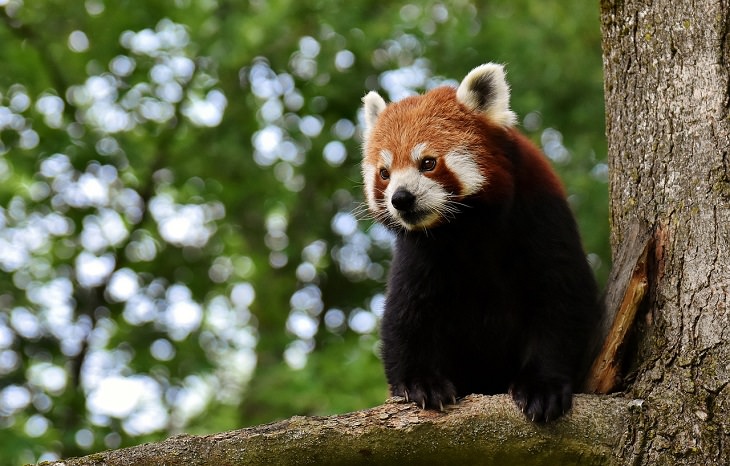
The Red Panda (Ailurus fulgens) is a native of certain South and Southeast Asian countries, more specifically China, India, Myanmar (Burma), Bhutan, Nepal, and Lao People’s Democratic Republic.
This adorable wild animal is threatened by severe habitat loss caused by urban development, mining, quarrying, and logging. Climate change, natural disasters and the spread of diseases have also contributed to the still declining population of this species.
The Red Panda is known to be hunted for its fur and meat and is even trapped and sold as an exotic pet. It is now protected by CITES Appendix I, and under the domestic laws of India, Bhutan, China, Nepal, and Myanmar.
Country-wide efforts to protect this species have been so far successful, though species recovery programs are yet to be implemented. A Global Species Management Plan has been developed and is carried out in zoos all across the globe. A specific conservation strategy has been developed that aims to reduce habitat loss and degradation, reduce the mortality rate of the species, etc.
Another important element in conservation is spreading awareness of the conservation efforts required to save a species and the need for further and more detailed research.
Click here to learn more about the Red Panda!
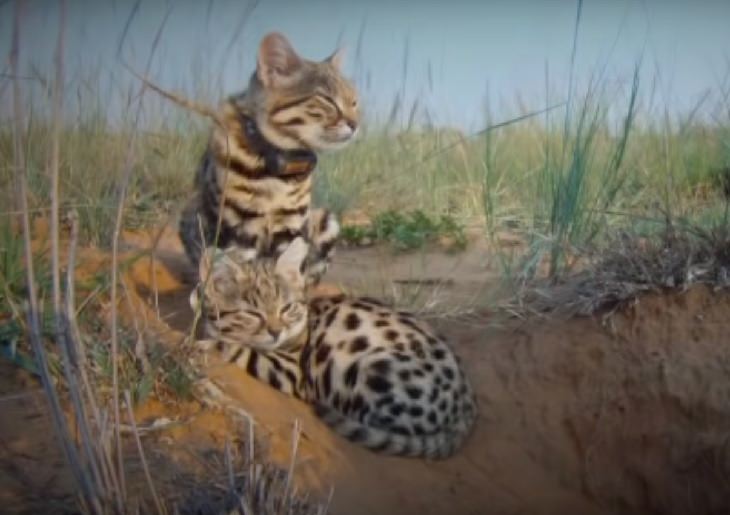
This wild feline, also known as the small-spotted cat (scientific name, Felis nigripes), is another species listed under Appendix I of CITES. It is found in certain African countries, namely South Africa, Botswana, Namibia, Zimbabwe, Angola, and Lesotho.
It is commonly seen for sale in the illegal pet trade and is also popular for its fur. Climate change and urban development are both causing drastic alterations in the environment that these cats usually inhabit. This is especially worrisome because all the populations of this species are focused in few locations. The species itself is found only on one continent. This makes them extremely vulnerable to diseases and genetic preconditions.
There are currently a little less than 10,000 mature black-footed cats left in Africa and research shows that the numbers are continuing to decline. While trade has been restricted internationally and domestically, hunting is still a major threat to this species and efforts are being made to enforce stricter punishments for this crime.
Another major strategy that is being developed to conserve these species is the management and regulation of apex predators that were previously introduced in protected areas that black-footed cats inhabit. There is still a need for further research and development to truly conserve this species.
To learn more about the Black-Footed Cat, click here!
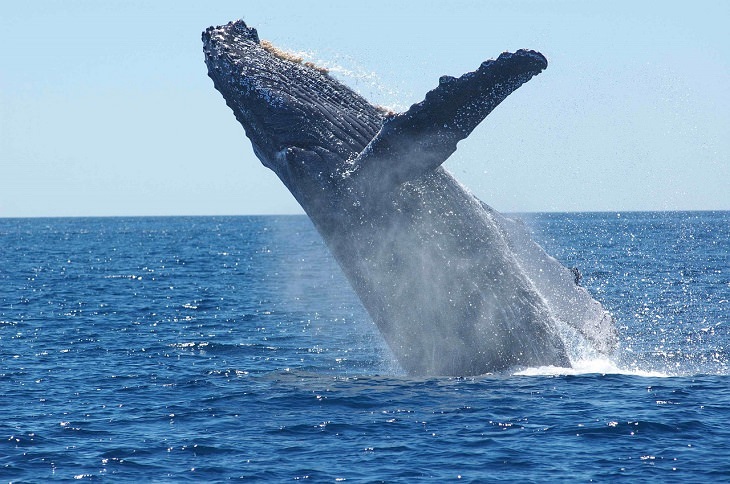
This species of baleen whale (named after the filter-feeder system found in the mouth of these whales) inhabits all major oceans. Megaptera novaengliae can be found off the coasts of almost 90 countries and most of these are protected waters.
Thanks to focused efforts to ban the practice of whaling, there are currently 84,000 adult humpbacks spanning the globe and their numbers are continuing to increase.
However, numerous deaths of humpback whales are reported to have been caused by collisions with large ships and heavy fishing equipment, and oil drilling machinery. One of the most virulent threats to the survival of this species is noise pollution.
Whales and Dolphins in general use the frequency of the waves generated by sound to communicate. This makes their sense of hearing heightened, and the sounds caused by ships and drills can be deafening for them.
Since the implementation of the International Whaling Commission (IWC) in 1955, this species is protected from whaling. It also attracts the protection of CITES Appendix I. Schemes are yet to be implemented to target the threats of noise pollution and collisions with man-made contraptions.
To learn more about the Humpback Whale, click here!
To learn more about the effects of oil and noise pollution on humpback whales, click here!

This animal is primarily found in the Queensland region of Australia, and its scientific name is Onychogalea fraenata. Earlier, this species was almost wiped out by hunting, sometimes for its fur, but mostly because it is considered a pest. However, the species has been protected under Australian law and hunting of it has largely reduced, as this species is only found in protected areas.
This type of wallaby is also extremely sensitive to the presence of alien species or diseases introduced to their environment. Their numbers are also being thinned due to draughts occurring frequently in their environment.
Other than protection granted by Australian Law as well as CITES Appendix I, a recovery plan has also been strategized. The recovery plan will be carried out to deal with multiple issues. These include working towards maintaining the existing populations, translocation of wallabies to other habitats and monitoring their progress, breeding programs and finally spreading awareness.
Some efforts have already been taken to manage predator levels and the growth of harmful weeds in certain habitats. The population of this wallaby has stabilized with a population of around 1000 matured individuals.
Click here to know more about the Bridled Nail-Tail Wallaby!
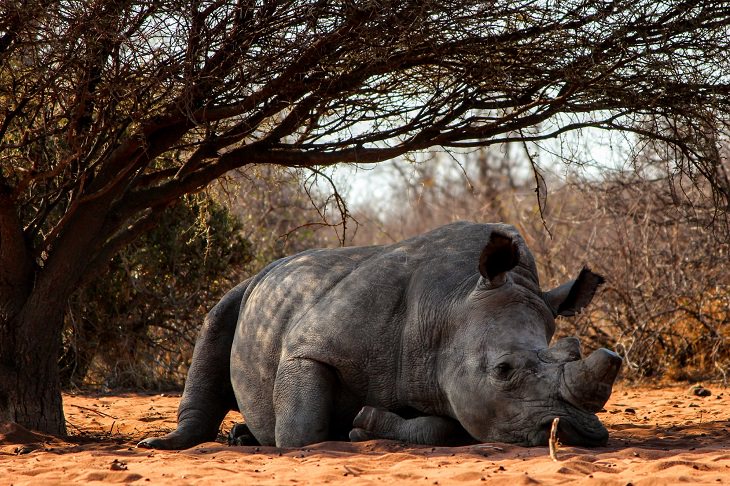
While the regulation of international trade is covered by CITES, there is still a dire need for each country to create laws within their borders to stop trade and hunting of species listed under Appendix I and II. These laws can only be truly effective if done in a with coordination between all the nations, tackling the problems on an international scale.
In addition to that, numerous programs are being carried out to protect the habitats of vulnerable species as well as increase their numbers. These also require cooperative effort because an immense number of resources are needed for this.
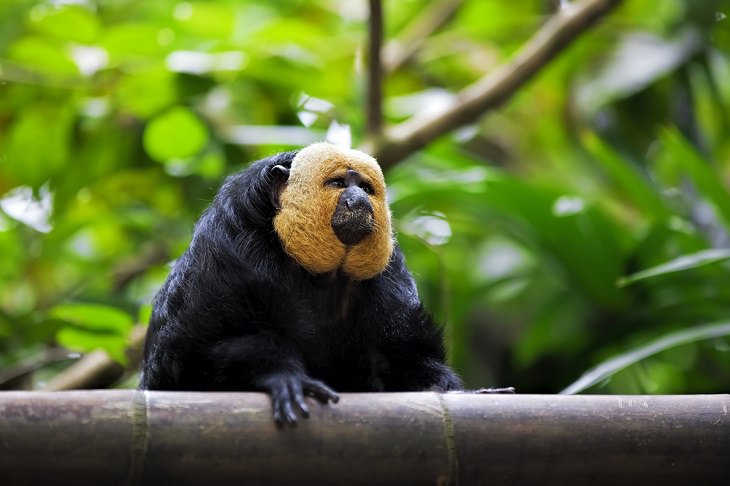
This species, which goes by the scientific name Chiropotes albinasus, is only found in Brazil. It is an endangered species, protected under Appendix I of CITES, but its numbers continue to decrease. Most of the population of this species reside in large, low-density forests that are rich in fruits.
Unfortunately, urban development (building of homes or roadways) along with increase farming and ranching practices are cutting away pieces of these forests. Hunting of these creatures for their meat is also widespread, despite its status as a protected species.
This species is found only in two major forests which have been declared as protected areas. But further conservation actions are still required to reduce hunting and trading of these species on a practical level, and to work towards increasing their numbers.
To learn more about the White Nosed Saki, click here!

Dugong Dugon is a sea-faring animal that off the coast of eastern Africa, western India and northern Australia with heavier populations around the Indonesian islands. This friendly mammal is more commonly known as a manatee or a sea cow, and it even has a Pokemon named after it!
While this species may be found in numerous different bodies of water, its number is steadily decreasing. This species has gone extinct in the provinces of Mauritius, Taiwan, and China.
Dugongs are currently being threatened by a number of human activities like unsustainable poaching and mariculture (harvesting of marine life), unregulated tourism, collision with shipping vessels and pollution. In addition to this, their habitats are being disturbed by degradation of coastal areas and modifications to the seabed.
The dugong is granted international protection under Appendix I of CITES, as well as the Convention on Biological Diversity (CBD) and the Convention on Migratory Species (CMS). The Ramsar Convention on Wetlands also protects certain important habitats of the dugong. Most initiatives for protected dugong areas have been developed in Australia.
Projects for marine protected areas in other countries are legislated but require better enforcement. A few action programs have also been developed by countries along the Gulf of Aden and the Red Sea, but most of these regions lack the resources to effectively implement them.
To learn more about the dugong, click here!
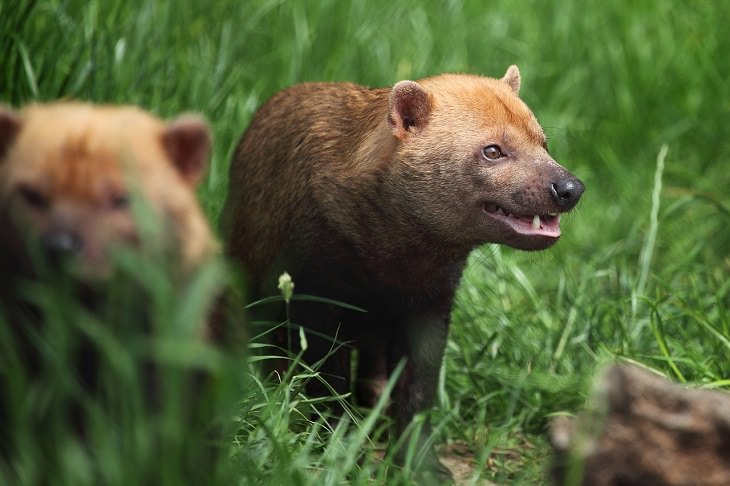
This member of the Canidae family (which also includes domestic dogs, jackals, wolves, and dingoes among many others) inhabits the grasslands of a number of South American countries. It is also known as the Savannah dog and goes by the scientific name Speothos venaticus.
One of the biggest threats to this small animal is the hunting of species that are its prey, which essentially leads to a reduction in their food supply. They are also exceptionally vulnerable to canine diseases like parvo and canine distemper. This species is also frequently hunted by domestic dogs and their environment is being affected by severe degradation and fragmentation.
As a species listed under CITES Appendix I, it is protected from international trade. Legislations have also been implemented in the individual countries to restrict hunting and trade of these wild dogs domestically.
Research is still being developed on combating the outburst of diseases spread by domestic dogs and other wild dogs. Efforts are also being taken to survey the prey density, species density, and habitat conversions. Techniques are also being developed to further expand the region this species inhabits.
Click here to learn more about the Bush Dog!
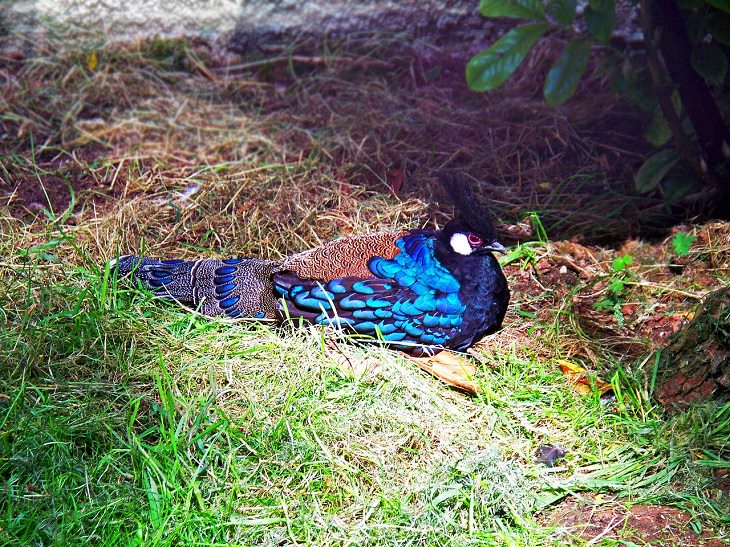
This is another species whose numbers are quickly depleting, and it is found only in the Philippines. There are currently only 50,000 adult individuals of this species left and they continue to rapidly decline in population.
In Palawan, where a huge distribution of this species is found, logging and mining (including the illegal kind) are common problems that have been damaging the habitat of this species of peafowl. Hunting and trade for this species, for both sale in the pet trade as well as its feathers, is also a threat to the survival of this bird. In some parts of the Philippines, this fowl is also hunted and sold for use as food.
The Palawan peacock-pheasant is listed as an Appendix I species under CITES. The entire region of Palawan is currently considered a protected game reserve, so hunting is criminalized anywhere within its borders. Two other areas where this bird is commonly found are also protected, and the conservation of this bird has been used to increase efforts for the general management of threats to birds found in the Palawan region.
Proposals have also been initiated for allocating more resources to stopping illegal hunting in this area. Awareness programs are also to be conducted so that the local forest collectors, who live off the resources of the forest, are also aware of the threat to this species in their home and can remain wary of hunters. Further research has to be conducted to find methods to reduce the habitat degradation occurring currently.
To Learn More About the Peacock Pheasant, Click here!
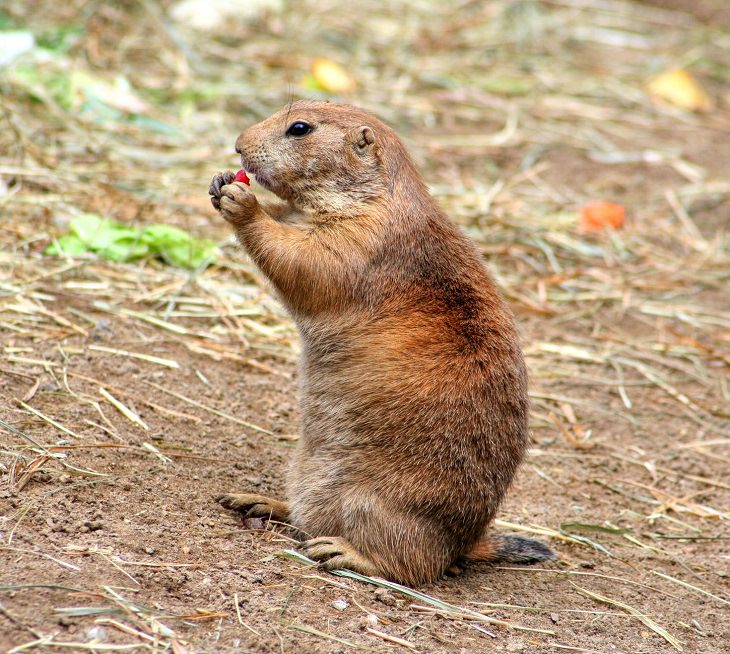
This species, Cynomys mexicanus, as the name would suggest, calls Mexico it's only home. This furry little burrower prefers the comfort of grasslands. Widespread expansion of agricultural practices and livestock farms have resulted in a reduction in the habitat that these rodents populate.
This has been one of the most dangerous threats to the survival of the Mexican prairie dog. In addition to this, these creatures are being wiped out by hunting, as they are considered pests, as well as by new types of plagues and other diseases. Modifications to water bodies situated in and around the habitats of this species, such as the building of dams, are another threat to the survival of this species.
The lands in which most of the populations of this prairie dog are found are protected areas. Other than this, this species is also protected by CITES Appendix I. However, much more planning and action is needed to preserve this animal's natural habitat as well as keep their numbers growing. There is currently very little information on this species available.
Click here to learn more about the Mexican Prairie Dog!
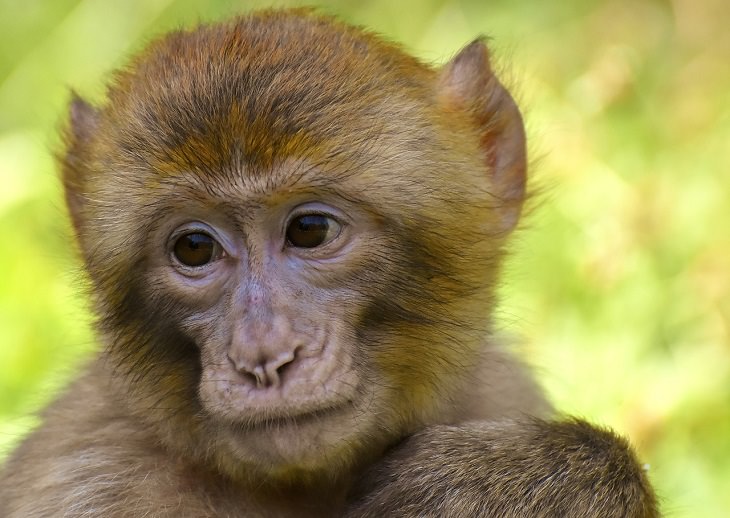
All of these species are protected from any form of trade, as well as any harm to their habitats and hunting of the animals themselves. Many protected species are still sold illegally and, in some places, openly so. That’s why it's important to keep an eye out for products made from protected species, like ivory, tiger skins, and red panda fur.
New projects are also being drawn up and proposed to help conserve and increase the numbers of endangered species. These projects can range from awareness programs to law enforcement seminars, species management workshops, instituting breeding centers, managing predator or prey density in different habitats, and reducing pollution and waste production.
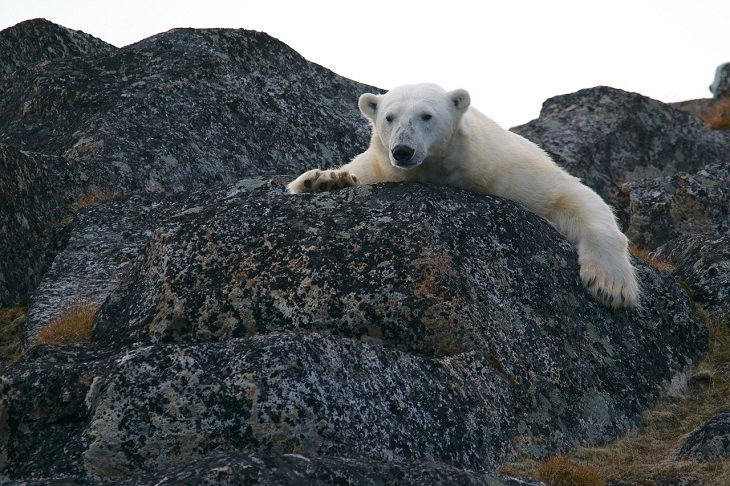
There is also a huge need for more cooperation and coordination not only between countries but states and provinces within those nations as well. Projects that require moving a species to another sanctuary or breeding center cannot be carried out without the help of all concerned parties.
You can do your part to help just by recycling and bringing down your fuel emissions, keeping our air and water clean. You can also help out by sharing this article with all the animal enthusiasts and activists you know. It’s time to spread awareness about a few more animals that we can help to survive and grow.
Related Articles:
Better Together: Animals Who Collaborate in the Wild
20 Animals With Amazing Camouflage